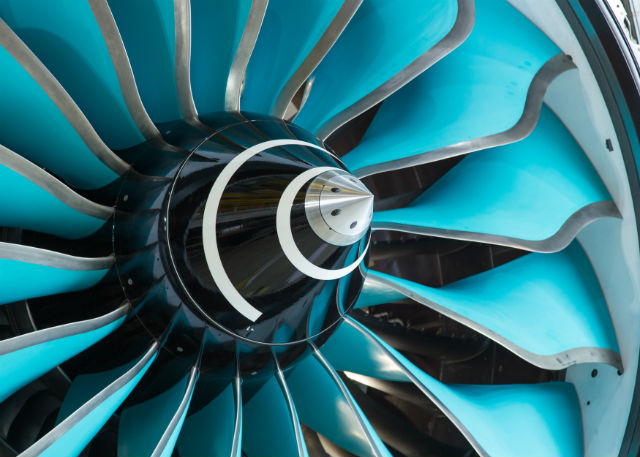By the end of the decade, a remarkable six clean-sheet commercial aircraft engines spanning two generations of propulsion technology are expected to enter service.
That long parade of fleet introductions – sporting all-new propulsion brands such as GEnx, Trent 1000, Trent XWB, PW1000G, Leap and GE9X – are aimed either at replacing decade-old families of engines reaching the end of their production life, or occupying gaps in thrust levels ranging from 14,000lb-thrust (62kN) to 105,000lb-thrust.
In that incredible diversity, however, is one significant omission. Nothing currently in development or recently transitioned into production falls within the range of 40,000lb-thrust to 60,000lb-thrust.
That glaring gap may soon have to be addressed. Boeing is studying what it calls a “middle of the market” (MOM) aircraft concept, potentially replacing 757s and 767-200s with a new aircraft starting around or after 2025. The concept could still be more than a year from a launch decision, but Boeing has loosely defined the configuration as a new aircraft with widebody comfort and narrowbody economics that can carry up to 220 people as far as 5,000nm (9,260km).
Such an aircraft could require Boeing’s engine suppliers to launch yet another new centreline engine. In June, GE Aviation chief executive David Joyce said the MOM aircraft design would require a new clean-sheet engine in a thrust range between 40,000lb-thrust and 50,000lb-thrust, representing a billion-dollar investment needed to develop and certificate another commercial engine.

New 757? It'll need new power
AirTeamImages
“If you take a look at it, we don’t have an engine in the portfolio that fits this thrust class, as I understand,” Joyce said. ”So, will it take a new development programme? Yeah.”
That places the MOM thrust requirement in a category that entered development in the late 1960s, then battled for orders and positions on the next decade’s great widebody rivals, including the Boeing 747, the Douglas DC-10, the Lockheed L-1011 and the Airbus A300. Two generations of engine families – bearing the brands JT9D, CF6, RB.211, PW2000, PW4000 and Trent 700 – were developed to power a wide assortment of narrowbodies and widebodies, including Boeing’s 757 and 767 and the Airbus A330.
Even as widebody thrust requirements tilted to the category over 60,000lb-thrust, GE and P&W alone have combined to deliver more than 10,000 engines in the middle of the market range over a period of nearly five decades. With the technology for the majority of engines in this class now decades old, it should be possible for the engine manufacturers to deliver a substantial reduction in fuel burn with a propulsion system entering service in another 10 years.
“The 757 had early 1980s technology, so if we’re talking about a 2025 aircraft, one would expect very significant [specific fuel consumption] improvements,” says Richard Evans, senior consultant with Flightglobal's advisory arm Ascend. “People used to reckon on anywhere from 0.5% to 1% per annum improvement in SFC or fuel burn at the aircraft level, so perhaps engines would have anywhere from 20% to 45% lower SFC.”
There are still many questions hanging over Boeing’s conceptual airframe. For example, could the new aircraft be as wide as a 767 or even larger, or could it fall between the width of a 757 and a 767 like the cancelled (and smaller) 7J7 concept from the 1980s?
Similar mysteries also exist for the engine architecture. P&W’s heavy investment in geared turbofan narrowbody engines, which are scheduled to enter service next year on the Airbus A320neo, has generated strong interest around the industry, with Rolls-Royce also investing heavily in geared-engine technology and GE Aviation acquiring gear specialist Avio.
Most engine company executives are keeping their plans for an MOM concept engine closely held, but P&W vice-president of technology and environment Alan Epstein is at least willing to make one bold prediction. Asked during a press conference in June how P&W could respond to Boeing’s MOM concept, commercial engines president Greg Gernhardt attempted to be as broad as possible in his reply. “There are a lot of people talking to us about the gear,” Gernhardt said. “And, you know, the PW1000G series of engines has a lot of leg room for future growth. We’re busy talking about a lot of opportunities.”
Then Epstein spoke up: “Let me add something. Whomever makes the next airplane, I will predict it will have a geared engine on it. In fact, I will even take money on that.”
A reporter asked if Epstein was offering the bet because he knew that his competitors were working on geared engine alternatives to the PW1000G series. “I didn’t say it wasn’t a sucker’s bet,” Epstein replied.
Epstein’s competitors at R-R have made it no secret that a geared architecture and improvements in thermal-cycle efficiency are the key technologies now being developed for the Advance, an engine being prepared for service entry after 2020. An even more advanced concept dubbed the “UltraFan” would add more exotic upgrades, such as variable-pitch fan blades to optimise air flow.

Carbon-titanium composite low pressure fan for Rolls-Royce Advance
Rolls-Royce
In a June press conference, R-R president of aerospace Tony Wood explained the company’s approach to an MOM aircraft requirement. Viewing the fragmenting of the narrowbody market as a long-term trend – with the emergence of the Bombardier CSeries and Embraer E-Jets overlapping with the Airbus and Boeing narrowbodies – R-R has focused investment in engine technologies that can swing between market categories.
That is “why the Advance and UltraFan have technologies that we can scale and apply to aircraft in different sizes in that market”, Wood says.
“We’ve been running fast at Rolls-Royce over the last 15 years developing a new engine every few years,” Wood adds. “We’re now at a period where with the strength of our orderbook we’re now in a demonstrator mode with those technologies, and making sure we can develop them fast enough to be ready to play on whatever options come.”
Wood also thanked a journalist for describing Boeing’s new concept as a “middle of the market” aircraft, noting that it should not be viewed as another narrowbody programme.
Eric Schulz, president of R-R’s large engine programmes, points out that Boeing’s strategy for addressing the MOM concept plays to his company’s strengths in the widebody engine sector. The strength of the Airbus A321 order book indicates a “clear shift” in demand for larger aircraft in what is usually called the middle of the market, Schulz says.
“We expect a natural translation to what we call the high end of the middle of the market into the widebody [category], and, looking forward, that’s probably why some of the airframers – Boeing, in particular – is looking at what we in the industry call a replacement for the 757,” Schulz says. “If they are positioning something in that market it would be in the high end of the narrowbody or the low end of the widebody. That’s where the big target is for us.
“We have the ability to go back to the middle of the market from an end of the market where we have traditionally been more comfortable and more successful.”
Source: Cirium Dashboard
















